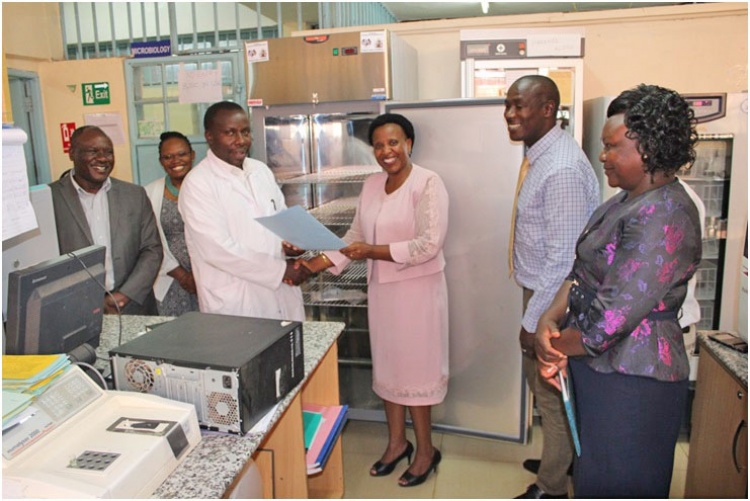The University of Nairobi, Central Kenya Response - Integration, Strengthening and Sustainability plus Project (CRISS+ Project) is a 5 year (2017-2022) PEPFAR-funded HIV prevention, care & treatment project in partnership with Kiambu and Kirinyaga County health departments, Kiambu People Living with HIV/AIDS (KIPEWA) and the Jomo Kenyatta University of Agriculture and Technology (JKUAT).
The project currently supports HIV related activities at 78 sites (49 sites in Kiambu and 29 in Kirinyaga counties) under the support from the US Government – President’s Emergency Plan for AIDS Relief (PEPFAR) through CDC.
The overarching goal of this project is to build the capacity of the public health response in Kirinyaga and Kiambu counties to achieve and maintain universal access to high quality HIV prevention, care and treatment services, with particular focus on county government and community ownership, integration within broader health and developmental context, through an evidence based, cost-effective and sustainable model of care.
The program implementation is underpinned by three key pillars – Service delivery, strategic information and leadership/governance support.
The project’s collaborating partners are the Ministry of Health (MoH) through the County Health Management Teams (CHMTs), Hospital and Health Facility Management Teams (H/HFMTs), and Community Health Units in Central Province.
The project’s achievements are as listed below:
- Tested 997,386 persons identifying 22,857 positives and linking 89% to treatment.
- Increased PMTCT coverage to 100%
- Increased viral suppression from 21% in 2013 to 93% in 2019
- Renovations, construction and equipping of key areas within the health facilities that greatly improved HIV care provision e.g. Kiambu CRH CCC lab and pharmacy, Wangige SCH, Karuri SCH, Kianyaga SCH and Kerugoya CRH among others.
- Establishment of electronic medical record systems in 16 large and medium volume facilities under the project as well as networking of key departments within these facilities that collectively contribute more than 80% of the data generated from the project.
- Strong collaboration with all levels of county health personnel for skill transfer through technical assistance and mentorship
- Facilitated training of more than 3000 HCWs in various NASCP approved trainings.
- Strengthened leadership and governance through leadership trainings for county and large facility management teams at SBS
- Establishment of Continuous Quality Improvement within the health facilities to help home grown projects that work at improving health care provision at the health facility
- Supply chain management that has greatly improved pharmaceutical and non-pharmaceutical supplies and minimized stock outs
- Implementation, roll out and sensitization of county and health facilities on new guidelines, reporting tools, registers and SOPs.
- Distribution of medical supplies, SOP’s, reporting tools and training material on behalf of/in collaboration with the counties.
- Establishment of routine data audit systems within the counties to verify data reports generated from the health care facilities.
- Improved compilation of routine and adhoc donor and MoH reports due to establishment of reporting and auditing systems.
- Establishment of collaborations between Kirinyaga/Kiambu counties, MoH institutions like NASCOP, Donors and partners (UMB, Strathmore, The Palladium group and CRISSP) that has greatly improved service delivery to the counties.
- Dissemination of best practices through national conferences, MDTs within the facilities and county forums.
Future Plans
The project plans to develop transition plans with the counties to take up HIV programming for sustainability.
- Log in to post comments

